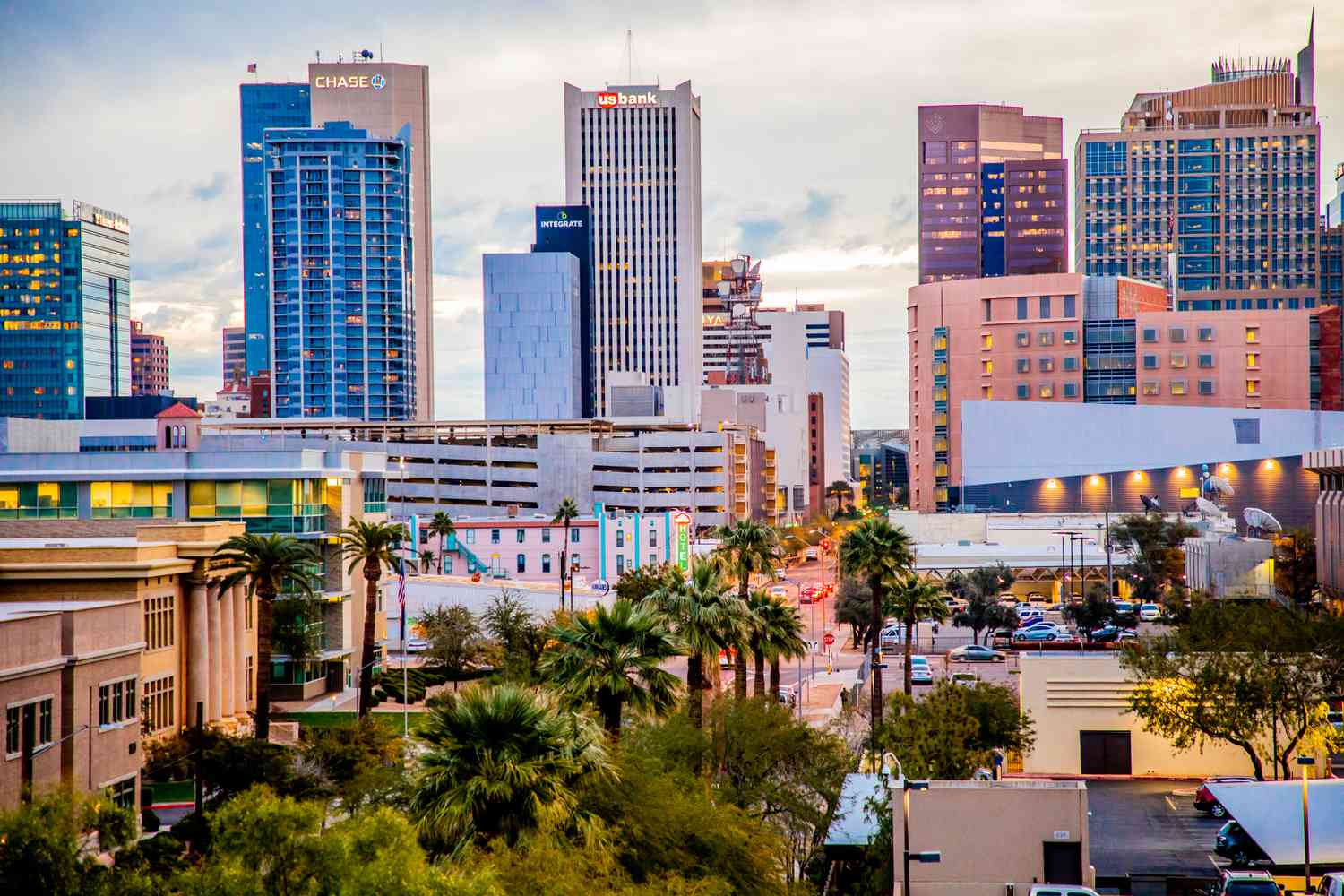Phoenix, Arizona, a city nestled in the heart of the Sonoran Desert, is not only renowned for its scorching temperatures but also for its groundbreaking efforts in sustainable architecture. In this article, we will embark on a journey through the arid landscape of Phoenix to investigate the innovative approaches architects and urban planners are taking to create sustainable structures that harmonize with the unique challenges posed by the desert environment.

Image credit: Tripsavvy.com
1. Climate-Responsive Design: Embracing the Sun: Architects in Phoenix have adopted a proactive approach to the relentless desert sun. Solar-responsive designs capitalize on the abundant sunlight, incorporating features like passive solar heating, shading elements, and reflective materials to optimize energy efficiency while ensuring comfortable living spaces.
2. Eco-Friendly Materials: Building with the Desert: Sustainable architecture in Phoenix goes beyond design principles to encompass the materials used in construction. Locally sourced, environmentally friendly materials are favored, not only for their reduced carbon footprint but also for their ability to withstand the harsh desert conditions. Adobe, rammed earth, and recycled materials are increasingly finding their way into the architectural fabric of the city.
3. Water Conservation Strategies: Harvesting Rainwater and Beyond: Water scarcity is a pressing concern in the desert, and architects in Phoenix are rising to the challenge with innovative water conservation strategies. Rainwater harvesting systems, xeriscaping (low-water landscaping), and water-efficient plumbing designs contribute to a more sustainable use of this precious resource.
4. Passive Cooling Techniques: Staying Cool Naturally: In a city where temperatures can soar, passive cooling techniques are crucial for creating comfortable living spaces without over-reliance on energy-intensive air conditioning. Architectural features such as courtyards, natural ventilation systems, and thermal mass are incorporated to maximize cooling through natural means.
5. Green Building Certifications: Commitment to Sustainability: Phoenix showcases a growing number of buildings that have earned green certifications, such as LEED (Leadership in Energy and Environmental Design). These certifications reflect a commitment to sustainability, energy efficiency, and environmental responsibility, setting a standard for future architectural endeavors in the city.
6. Integrating Technology: Smart Solutions for a Smart City: In the quest for sustainability, technology plays a pivotal role. Smart building technologies, including energy-efficient HVAC systems, automated shading, and advanced insulation materials, are integrated into architectural designs to enhance energy performance and reduce environmental impact.
As we explore the sustainable architecture of Phoenix, it becomes evident that the city is not just adapting to its desert surroundings but thriving in harmony with them. Architects and urban planners are transforming challenges into opportunities, creating structures that stand as testaments to innovation, resilience, and a deep commitment to a sustainable future. For the eco-conscious traveler, these architectural marvels serve as more than aesthetic wonders; they embody a city’s dedication to environmental stewardship and a blueprint for sustainable living in even the most challenging of landscapes. As you traverse the streets of Phoenix, take a moment to appreciate the architectural symphony that seamlessly weaves together tradition, technology, and a profound respect for the desert environment.




Leave a Reply